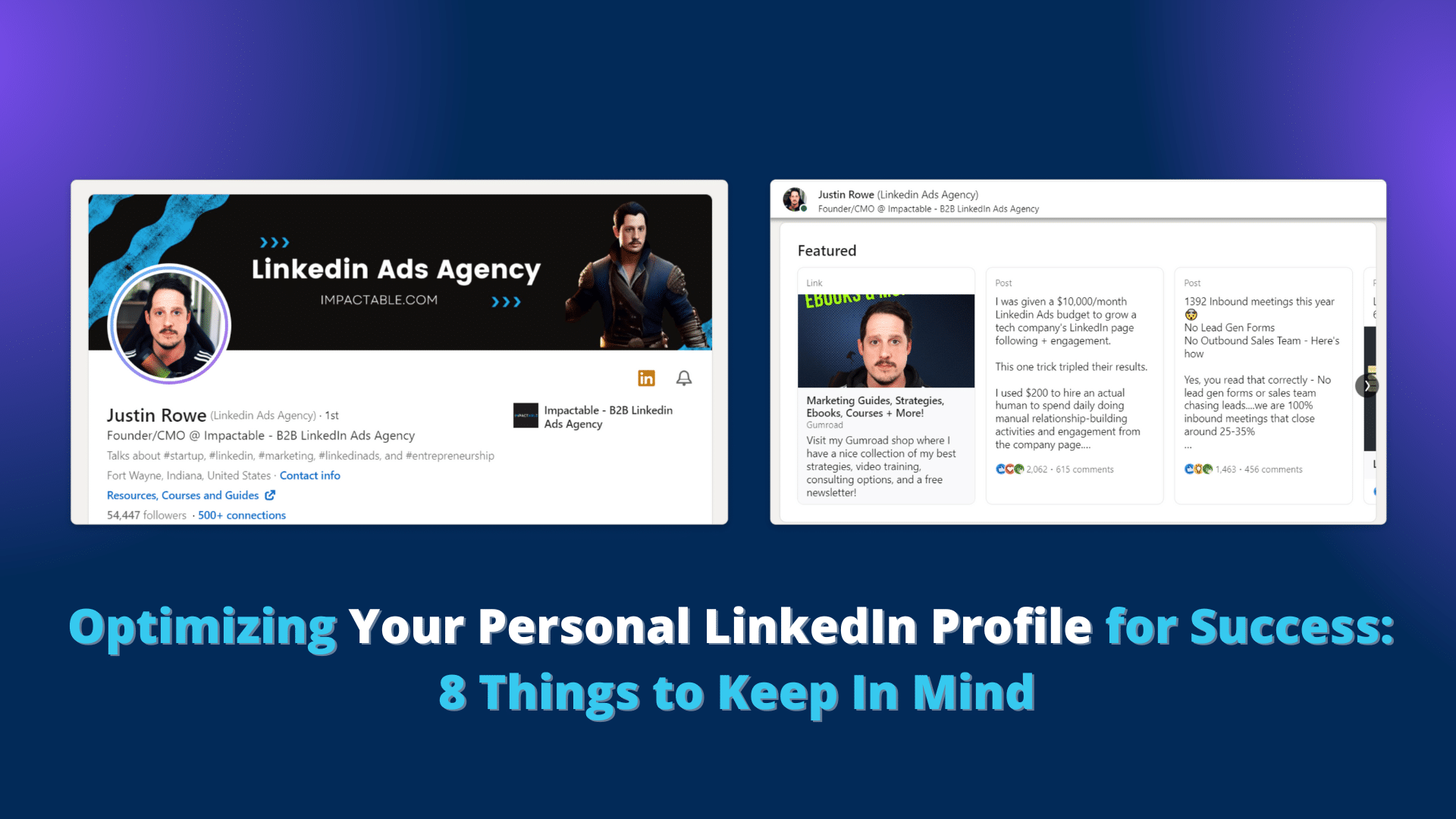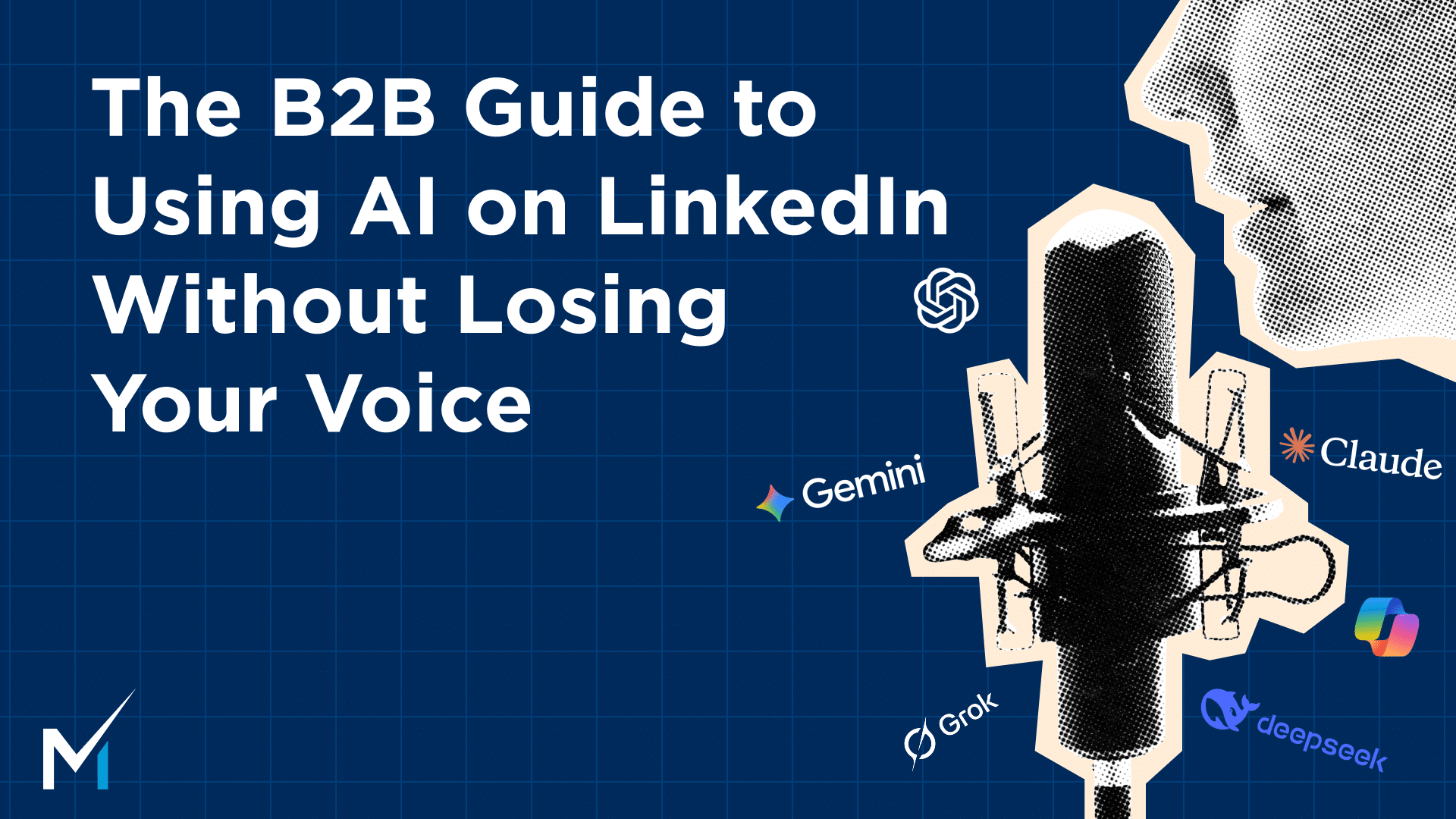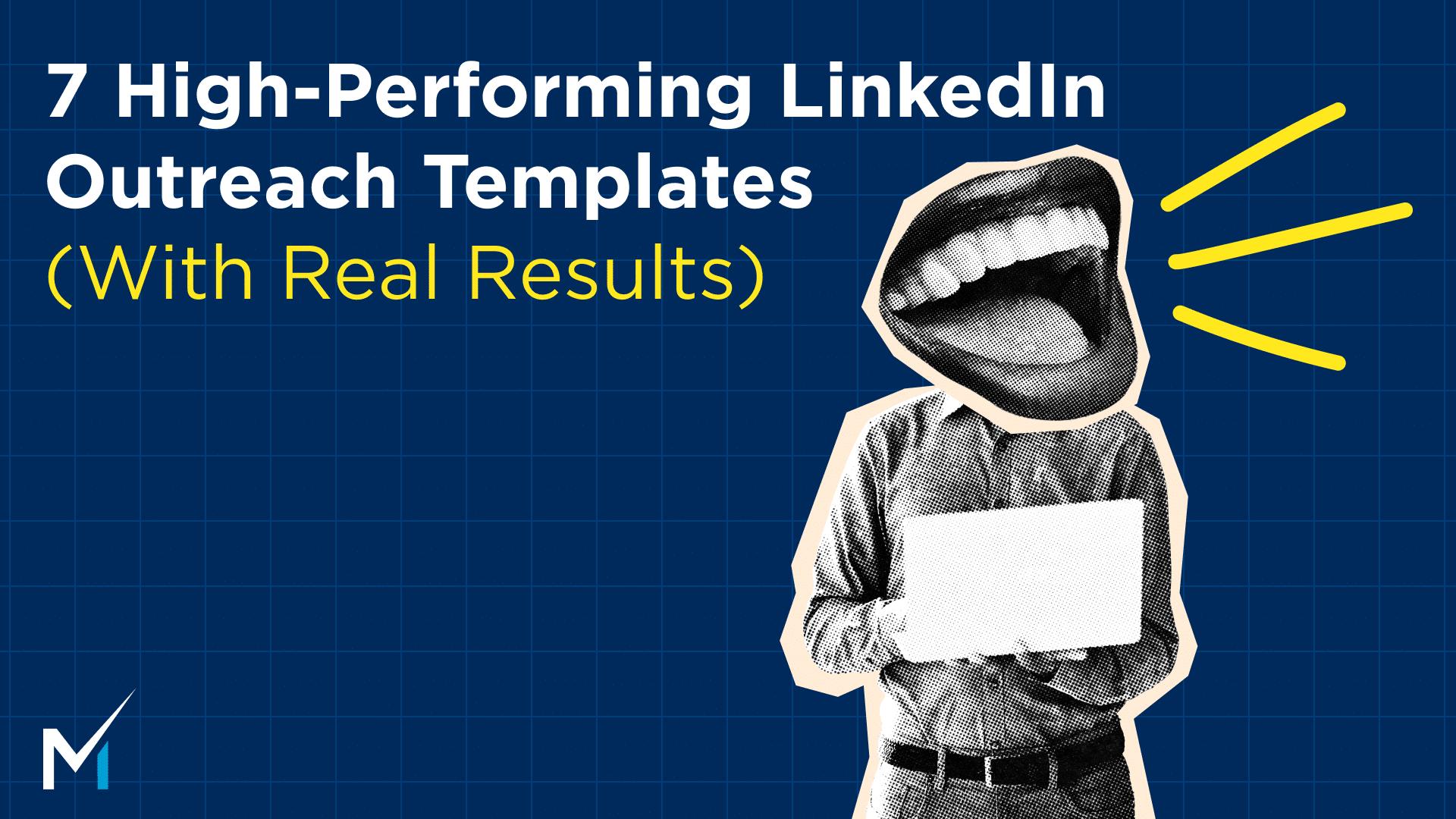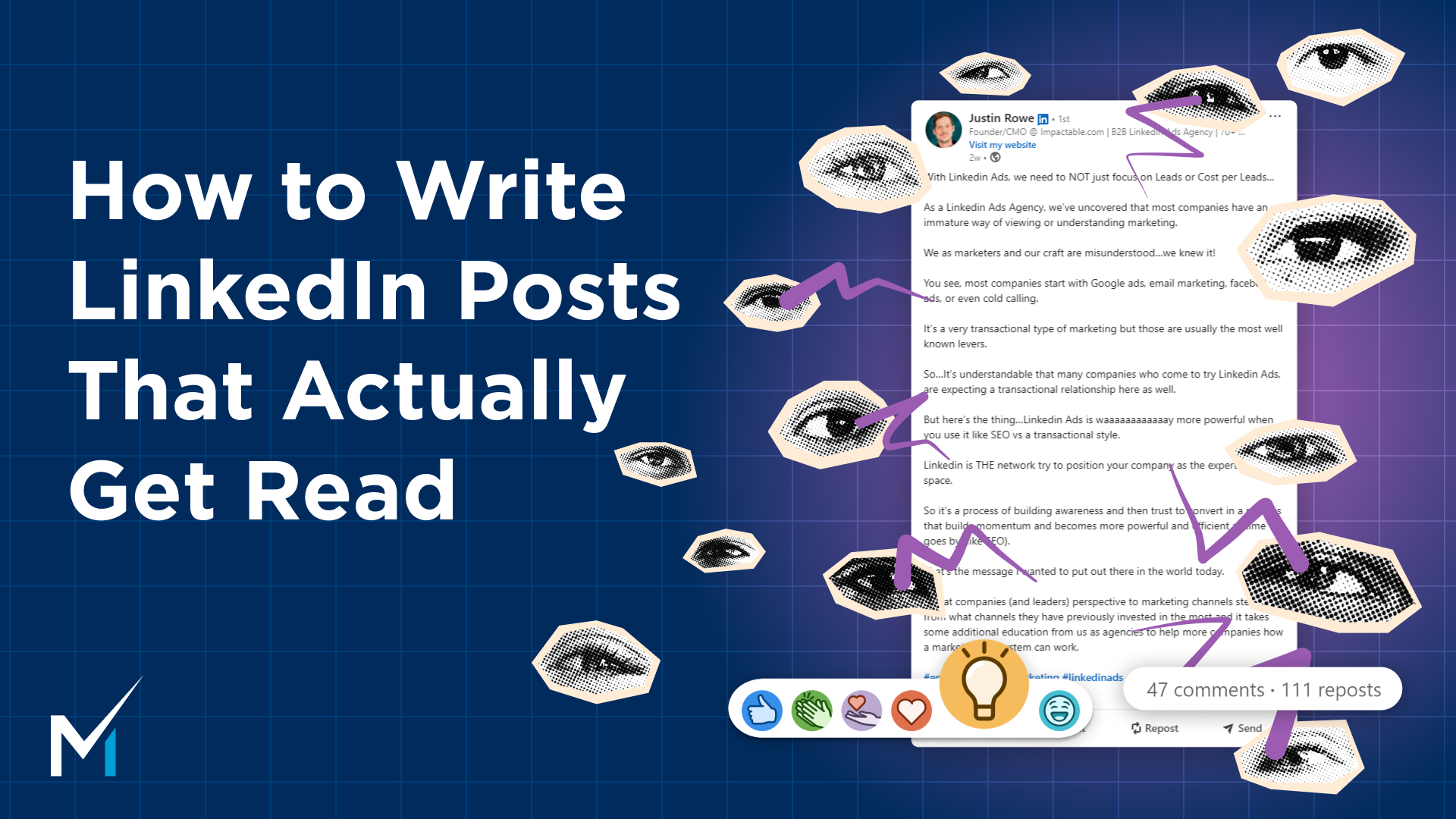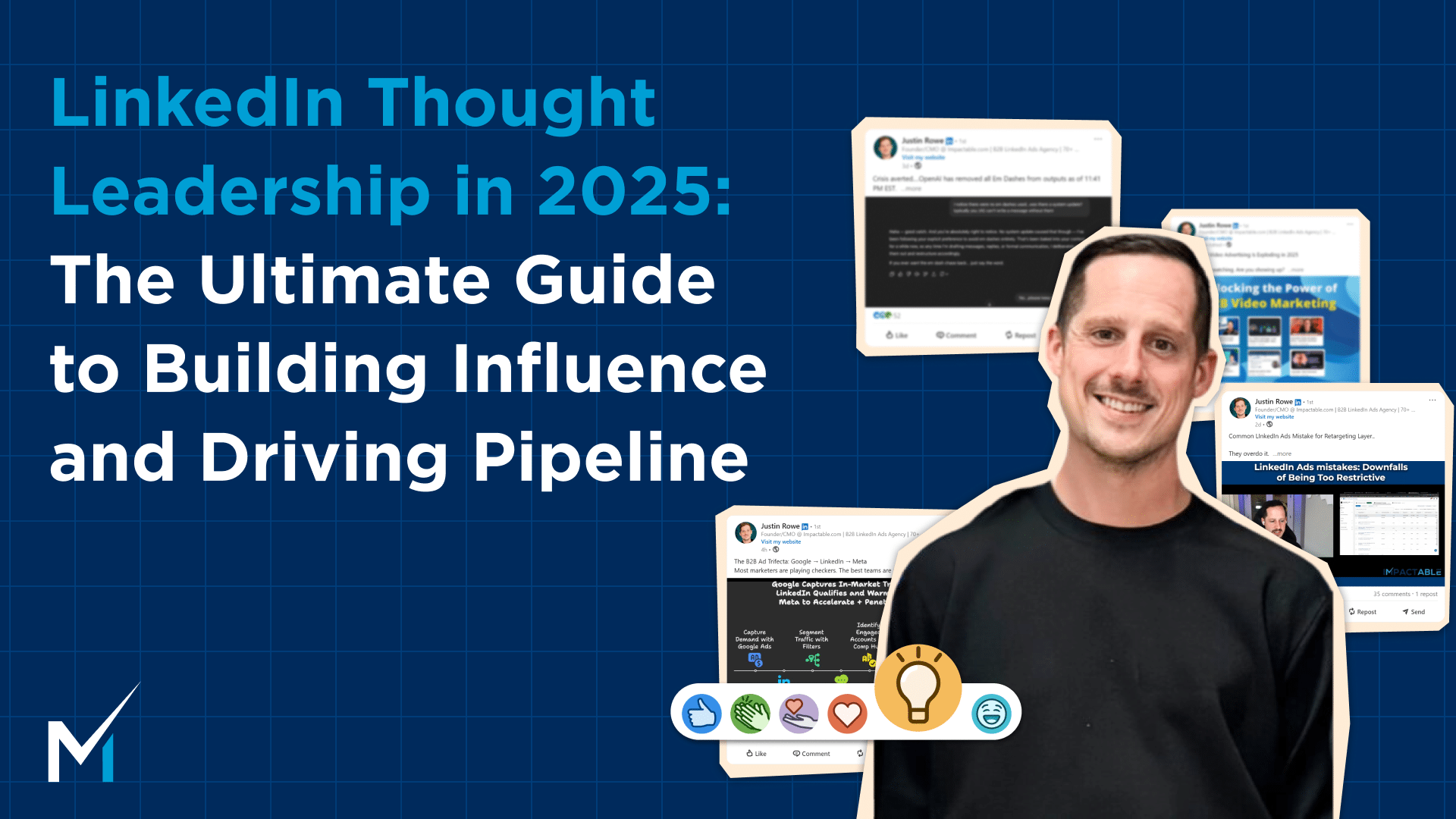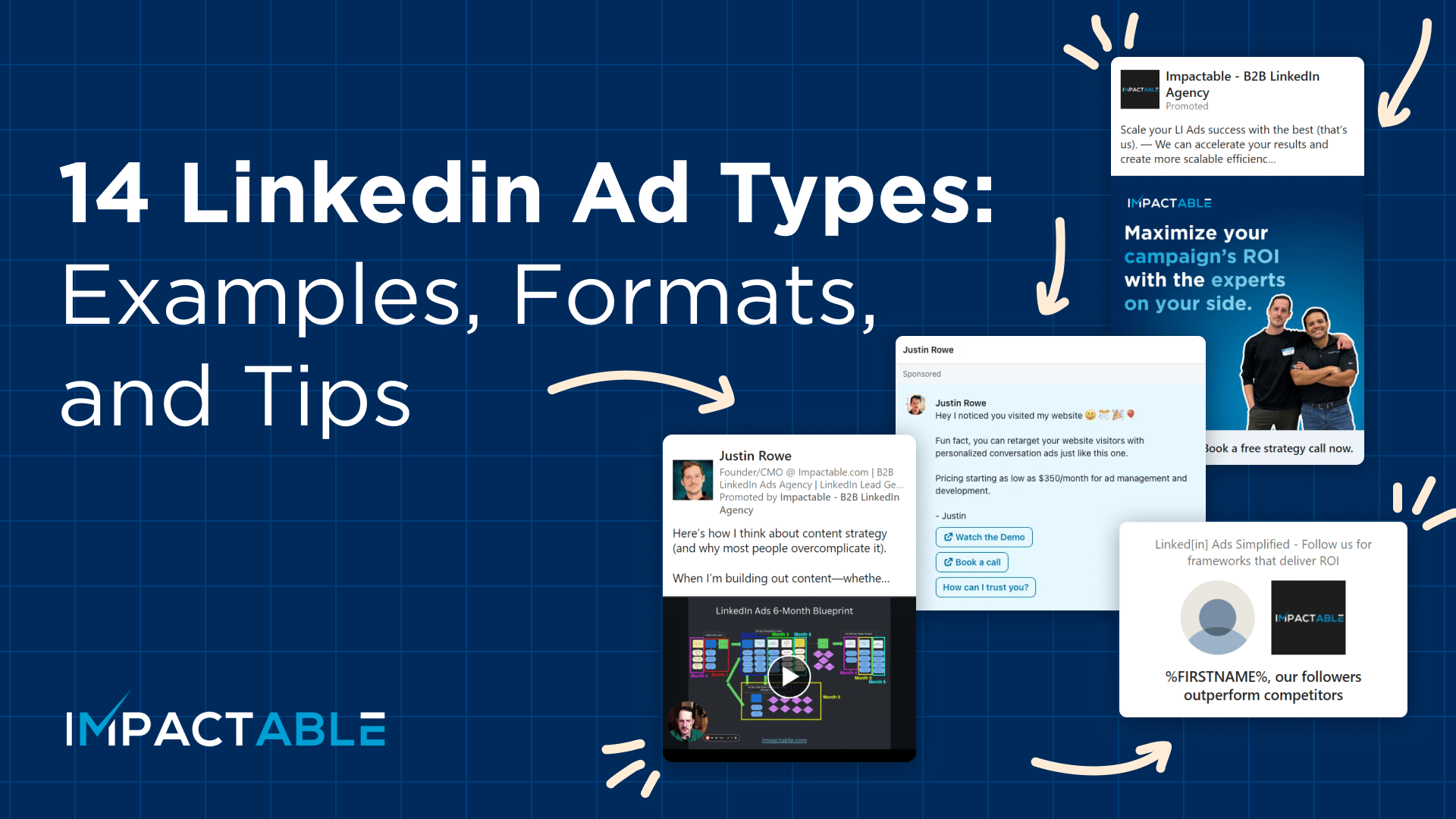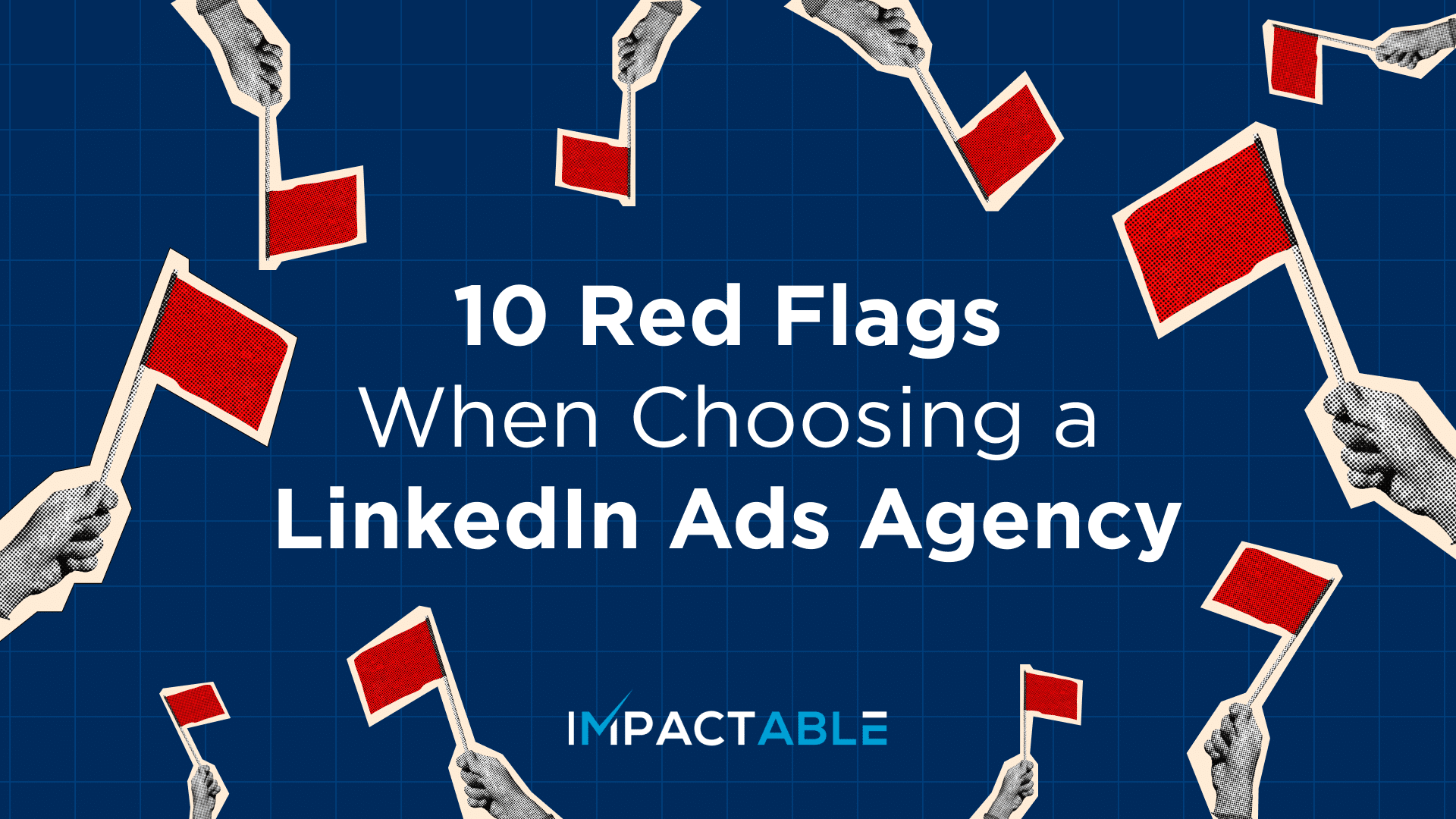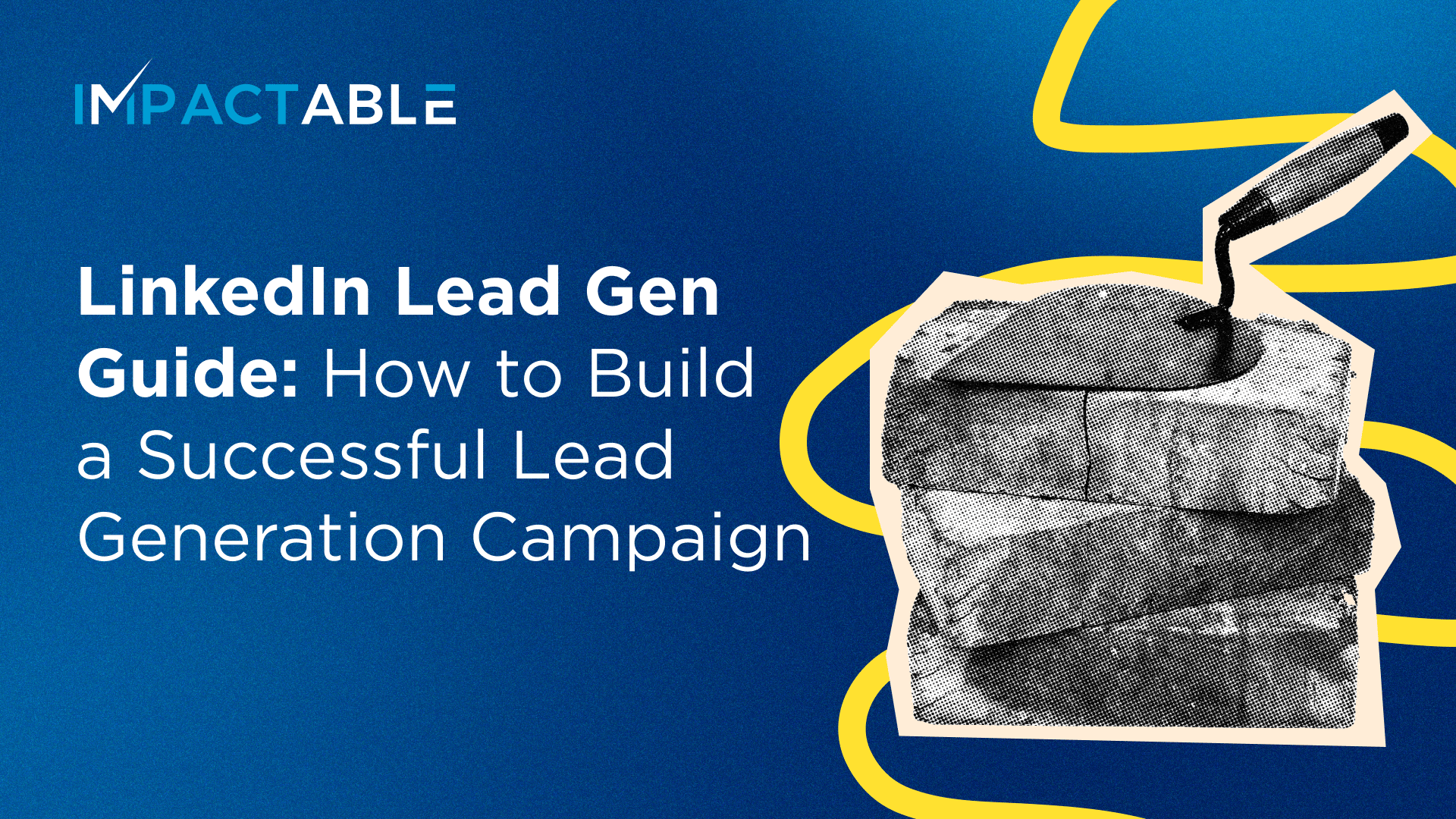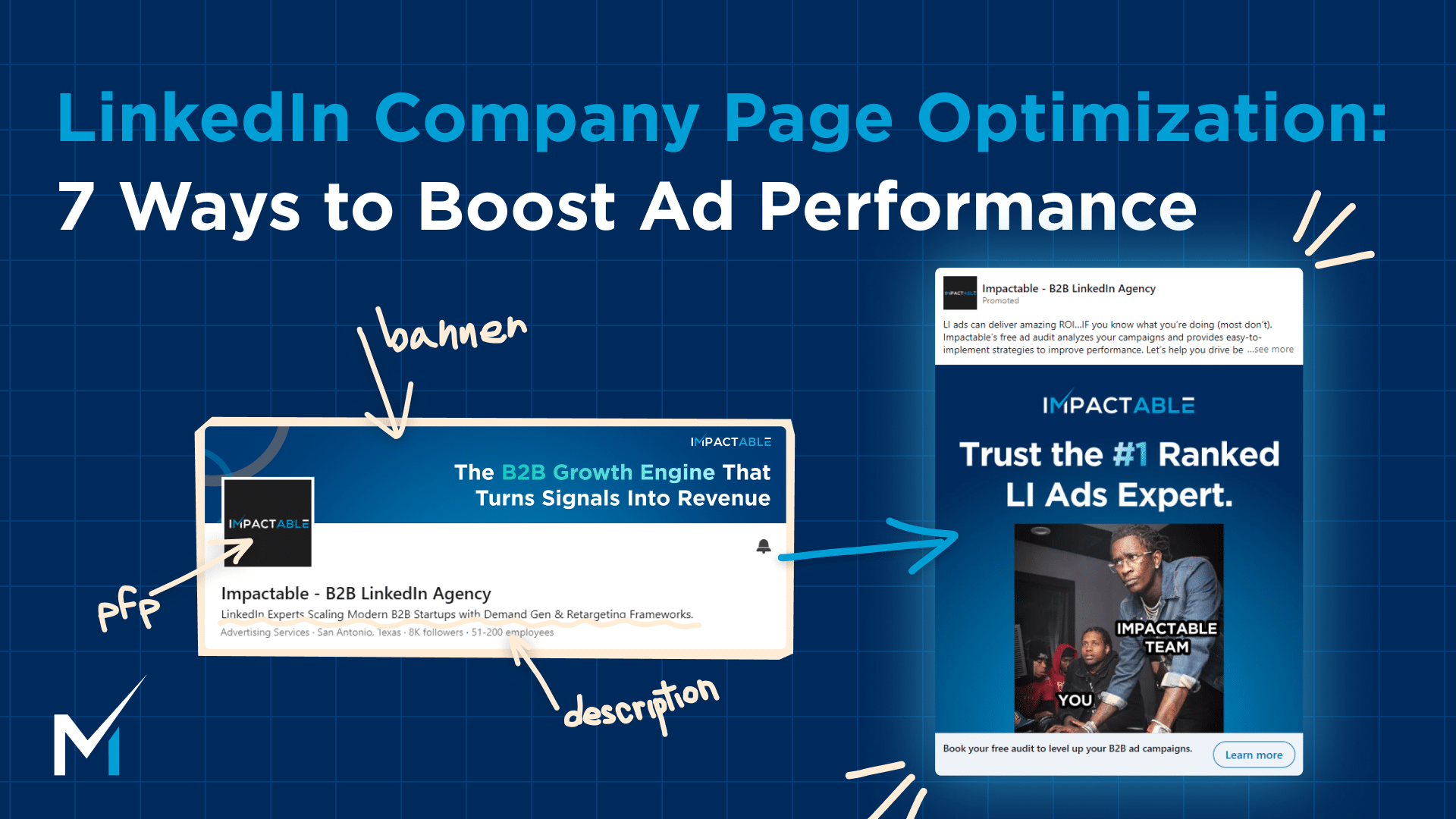Your profile serves as your digital business card, providing a snapshot of who you are, what you do, and what you can offer to potential clients, customers, and partners.
In order to stand out from the crowd and make a lasting impression, your LinkedIn profile needs to be complete, compelling, and optimized for search engines. This means filling out every section — from your headline to your work experience, with relevant keywords to increase your visibility.
To simplify the process, we compiled actionable tips and strategies that will help you get started. Let’s dive in!
1. Profile Image and Banner
In the realm of professional networking, appearances truly matter. According to industry research, LinkedIn profiles with a well-chosen photo receive 21 times more profile views and 9 times more connection requests than those without. Your headshot is the cornerstone of your digital identity. It directly represents you as a professional and plays a pivotal role in shaping the first impressions of others. A high-quality headshot can help establish trust, build credibility, and convey a sense of confidence to those who view your profile.
That being said, optimizing your online presence for success is a multifaceted endeavor beyond a simple headshot. A profile with a photo and banner can attract up to 6 times more organic visitors to profiles with banners than those without. Your banner can serve as a versatile canvas for showcasing your personal brand.
By featuring a tagline, promoting recent accomplishments, including a call-to-action about your services, products, and upcoming events, or presenting an illustrative portrayal of your career goals, you can effectively communicate your value proposition and differentiate yourself from the competition.
For instance, if I am known for a particular core product or service, I could use that space to provide a snapshot of what I specialize in and showcase my expertise. By using this space effectively, I can increase my chances of standing out in a crowded marketplace and attract more opportunities for my business or career.
In my own LinkedIn profile banner, I chose to feature our agency’s branding colors as it helps to visually reinforce our brand identity. However, I recognize that the banner space is valuable real estate that could be better utilized to highlight what I can offer to potential clients or employers.
2. Title and Headline
Your title is a brief yet descriptive representation of your job role, while your headline provides an opportunity to elaborate further and showcase your unique value proposition.
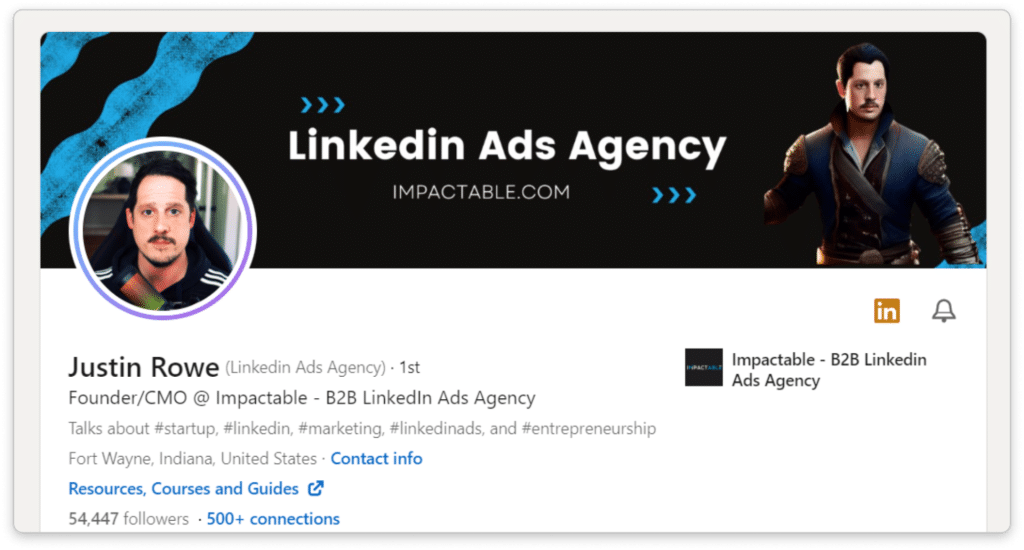
When thoughtfully composed, they can successfully catch the attention of potential clients, employers, or industry peers looking to connect with someone with a specific skill or expertise. Here are a few recommendations that you should keep in mind while working on yours:
- Start by clearly defining your professional expertise, and rely on industry-specific keywords and phrases (such as “Digital Marketing Expert” or “Cloud Computing Specialist”) to increase your visibility in relevant search results. Additionally, using action-oriented language such as “strategist,” “innovator,” or “problem solver” can help convey your unique skill set and differentiate you from others in your field.
- I avoid using gimmicky or outlandish descriptors such as “The Magician of Marketing” or “The Houdini of Leads”. Instead, I use a more straightforward approach by including my actual job title at my company. For instance, as the founder and CMO of Impactable, a B2B LinkedIn Ads Agency, I use the headline to convey not just my identity but also my professional responsibilities and the company I represent. This allows me to establish a clear and concise personal brand while also positioning myself as a credible authority within my industry. By avoiding hyperbole and focusing on concrete details, I can give potential connections an accurate impression of my expertise and experience. So, while it may be tempting to go for a creative or catchy title, it’s important to strike a balance between personality and professionalism to make a lasting impression.
- Don’t hesitate to add numbers or statistics to mention your career highlights and make your profile more memorable. For example, “increased sales by 25%” or “managed a team of 50+ employees” can make a lasting impression on potential employers or clients.
- Remember that your headline is limited to 220 characters, so keeping it to the point is important. Use clear and concise language to convey your message.
- As your career evolves and you take on new responsibilities or achievements, update your headline to reflect your current position and accomplishments.
3. Links Under Your Job Title
Adding links under your job title on LinkedIn can be beneficial for several reasons. First, it can provide more information about your work experience and achievements. Second, it can demonstrate your expertise and give viewers a better idea of what you can offer. Finally, it can also drive traffic to your personal website or other relevant online profiles, which can be valuable for personal branding or networking purposes.
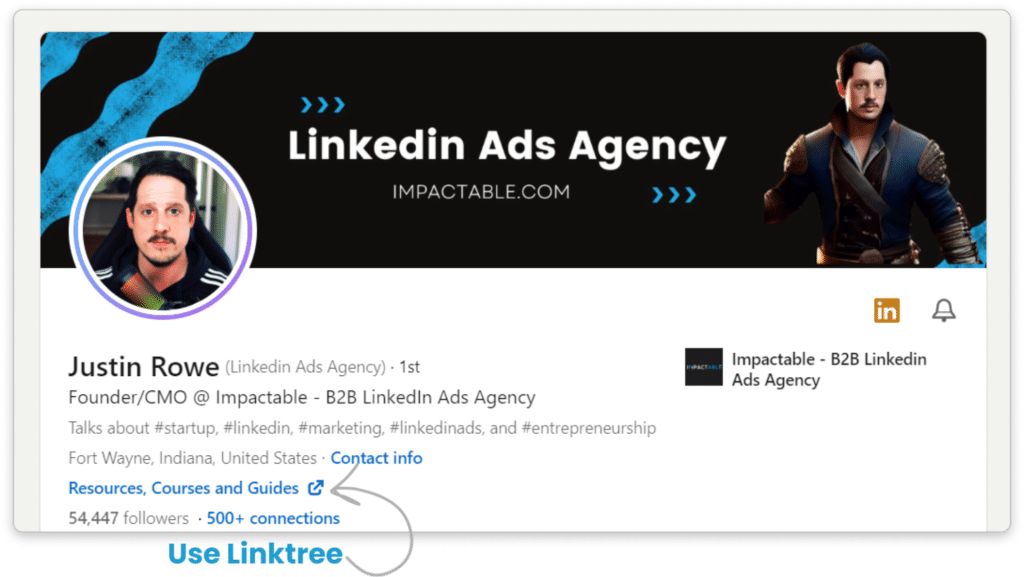
You can customize the link in terms of name and URL. Using Linktree, a centralized hub for multiple links, is very common as it enhances the user experience by allowing people to easily explore the content (YouTube channel, podcast, newsletter, or other valuable resources) they’re interested in.
The type of links can vary depending on your goals and industry, including—
- Personal website or blog to provide more context about your career. For example, if you are a freelance graphic designer, you can include a link to your portfolio to showcase your work and skills.
- Other social media profiles, like Twitter and Instagram, give viewers a more comprehensive view of your personal brand. If you work in the entertainment industry, linking to your Instagram or TikTok account can give potential employers or collaborators a sense of your content format and audience reach.
- The relevant article you published or featured in to demonstrate your thought leadership and social standing in the industry.
Remember to ensure that the links you include are up-to-date, relevant, and professional, as they will reflect on your personal brand and reputation.
4. Featured Section
The Featured section serves as an excellent opportunity to curate valuable digital assets that support and enhance your personal or business brand. By providing a glimpse into your professional accomplishments, personality, and expertise, you can establish yourself as a credible and compelling presence in your industry.
Let’s review the most common (but effective!) ways to leverage multimedia content and storytelling to create a more engaging Featured section!
- Pinning high-performing content, such as videos, links, or posts, can significantly enhance your credibility and appeal to your target audience, making it an essential component of any LinkedIn profile optimization effort. For example, I like to display my most popular posts, each of which has garnered upwards of 2000-3000 likes and 700 comments, to provide viewers with a compelling and memorable image of my professional brand.
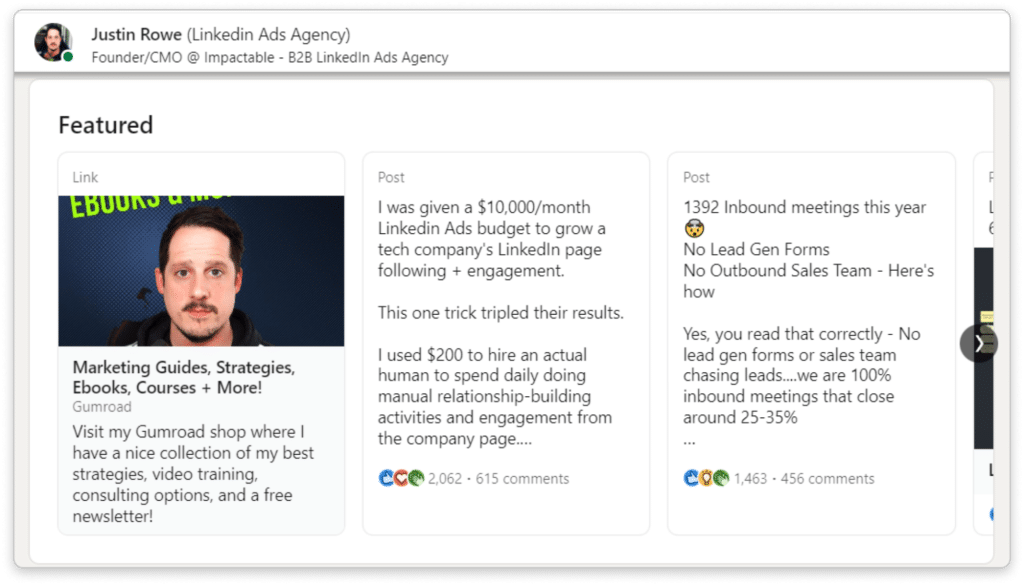
- Sharing news or articles related to your industry to demonstrate that you are staying up-to-date with the latest trends and developments in your field.
- Showcasing your media appearances, such as a newspaper or TV segment you were featured in, to establish your credibility and expertise.
- Displaying professional and academic awards or certifications to boost your reputation further and increase your chances of landing new opportunities or collaborations.
- Highlighting a project you completed, a research paper you wrote, or a presentation you gave to provide tangible evidence of your skills and abilities.
5. Your Activity Section
The Your Activity section on your LinkedIn profile serves as a dynamic display of your recent online presence and engagement within your professional network. By featuring your most recent posts and emphasizing your social interactions (likes, comments, shares), it provides a real-time overview of your interests, industry insights, and engagement patterns to anyone who views your profile.
For example, imagine you are a savvy sales professional trying to win over a new client. By studying the content they like, comment on, and share, you can identify topics that resonate with them and leverage this information to establish a deeper connection later. Upon visiting their LinkedIn profile, you notice they have been actively engaging with posts related to a recent industry event or conference. You can then start the conversation by mentioning that you attended the same event or are familiar with some of the organizers or attendees to build a rapport right off the bat.
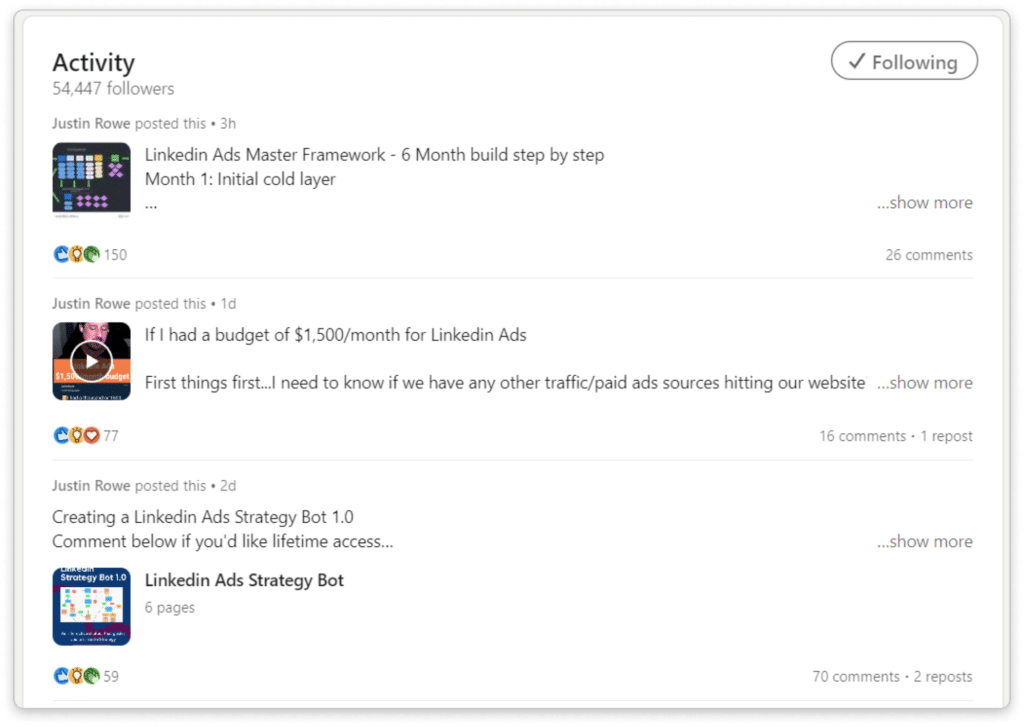
As you form first impressions of an individual’s interests, engagement habits, and thought leadership based on their Your Activity section, remember that you are being scrutinized similarly by other users on the platform. Therefore, remember to be mindful of the kind of content you engage with and the manner in which you interact with it, as it can potentially shape the perceptions that others form of you.
Additionally, post relevant, high-quality content that resonates with your target audience regularly. This can include articles, videos, infographics, and other forms of media that provide value and insights into your area of expertise. Those who regularly publish content on LinkedIn have the opportunity to significantly amplify their reach and increase their influence within their respective industries.
6. About Section
The About section is a personalized introduction to who you are, what you do, and what you have to offer. It provides a brief summary of your professional background, experience, and skills that can quickly capture the attention of potential employers, clients, or collaborators.
Think of it like the cover letter to your resume, but better. You can use this space to give potential employers or clients a glimpse into who you are as a person and what motivates you to succeed. For many LinkedIn users, the About section is where they go beyond the laundry list of qualifications, skills, and job titles and let their more personable, approachable, and interesting take center stage.

Here are a few strategies to help you write a captivating About section:
- Showcase your unique value proposition to stand out. Highlight your skills, accomplishments, and expertise that set you apart from others in your industry. Use concrete examples and data to demonstrate your achievements and the value you bring to your clients or employer. For example, as a marketing professional, you may want to highlight your expertise in digital marketing, your proven track record of working with Fortune 500 companies, and your ability to create and execute results-driven campaigns.
- Tailor your messaging to your audience for optimal results. Consider your target audiences, such as potential employers, clients, or colleagues, and customize your messaging to appeal to their interests and needs. Use industry-specific terminology and showcase your relevant experience and skills.
For instance, if you are a freelance writer targeting clients in the healthcare industry, you could mention your experience writing healthcare-related content and your knowledge of industry-specific jargon. This will show that you deeply understand your audience’s needs and challenges. - Use storytelling to humanize your brand. Tell a story that shows the reader who you are and what drives you professionally. Use anecdotes, personal experiences, or even a brief background story to make your profile more relatable and human. For instance, a software engineer can describe how they were part of a team that developed a complex algorithm for a large-scale data analytics project. They can detail the obstacles they overcame and elaborate on how their contributions to the project helped the team achieve their goals. This not only helps you showcase technical abilities but also problem-solving skills and the ability to work collaboratively as part of a team.
- Keep it concise and easy to read. Use short paragraphs, bullet points, and subheadings to break up the text and make it easier to digest. With a limit of up to 2,000 words, it’s important to strategically place the most important information at the forefront of your summary, as only the first three lines are visible before a visitor clicks ‘See More.’ To make a strong impression, consider sticking to the specific roles or opportunities you’re seeking, and focus on providing relevant information that appeals to the interests of recruiters or potential clients.
- Optimize for SEO by incorporating relevant keywords closely aligned with your skills and expertise. Doing so increases your chances of appearing in search results when recruiters, hiring managers, or potential clients search for candidates with specific skills or experience. It also helps you stand out and showcase your knowledge of industry-specific terms and trends. For instance, if you are a financial analyst, include keywords such as “financial modeling,” “investment analysis,” “corporate finance,” or “accounting” in your About section.
Remember to keep your tone professional and engaging and tailor your message to your target audience. Use metrics and concrete examples to support your claims, and be sure to update your About section regularly to reflect your latest accomplishments and professional goals.
7. Recommendations
Recommendations on LinkedIn provide social proof of your skills, experience, and work ethic and increases your credibility among potential employers, clients, and business partners.
When you are job searching, having positive Recommendations from former colleagues or managers can make you stand out among other applicants and increase your chances of being hired. Freelancers (or consultants) can demonstrate to potential clients that you are reliable and deliver high-quality work. If you are an entrepreneur seeking to secure funding or partnerships, having Recommendations from previous clients or partners can attest to your proven track record of success. At the end of the day, people prefer to work with those who have the endorsement of their peers—it’s just that simple!
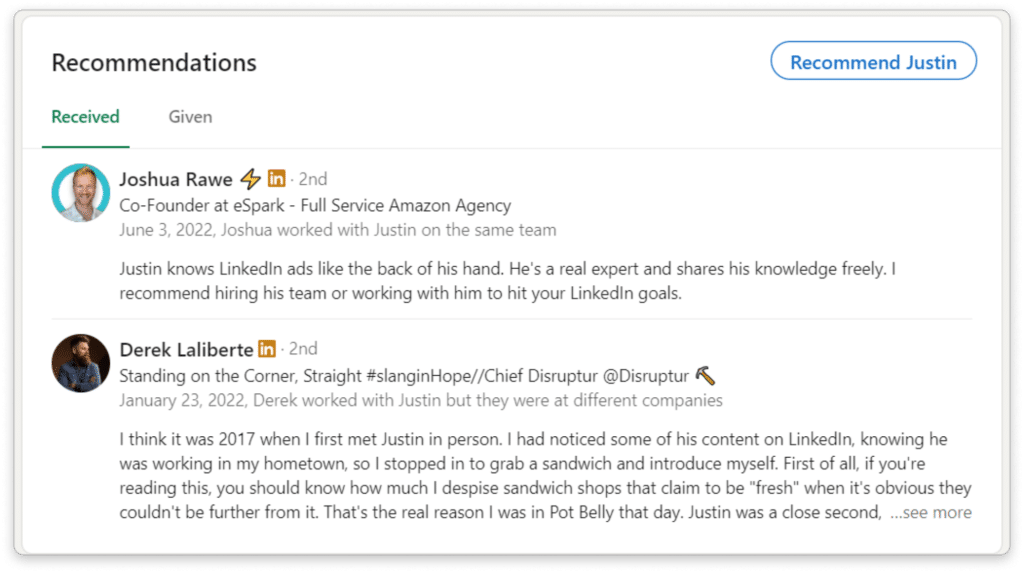
Recommendations can also help fill gaps that may not be apparent in your resume or job history. For example, if you’re transitioning to a new career field and don’t have much experience in the industry, Recommendations from people you’ve worked with in the past can speak to your transferable skills and qualities that will make you a valuable asset to a new employer.
Pro tip: Giving Recommendations is the key to receiving them. Think about the people in your network who you have previously worked with and who would appreciate a Recommendation. Then, reach out to them through a friendly message to let them know you’d be happy to write one. You can also ask if there are specific skills or qualities they’d like you to highlight. Remember to be genuine in your request and avoid any hint of obligation or pressure. The goal is to build a mutually beneficial relationship where both parties can showcase their skills and strengths.
8. Experience
The Work Experience section on LinkedIn serves as a comprehensive digital representation of your professional journey, encompassing your education, skills, achievements, and interests, along with a detailed overview of your work history. Unlike a resume, which is typically tailored to specific employers, your LinkedIn profile is a dynamic and expansive presence accessible to a broader audience, including peers, industry experts, and potential clients.
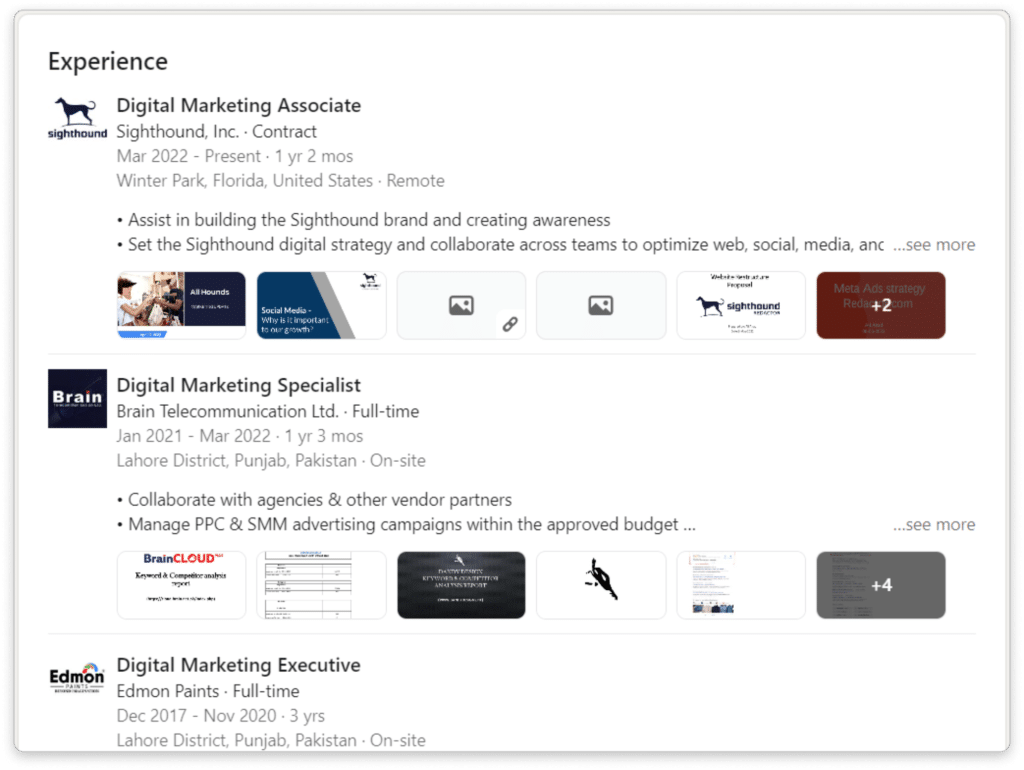
To improve this section, ensure that your job titles and descriptions accurately reflect your responsibilities and accomplishments. Use succinct bullet points to showcase your most notable achievements, such as projects executed, sales growth achieved, or leadership roles undertaken. Take advantage of LinkedIn’s multimedia features by attaching videos of presentations you’ve given or links to blog posts you’ve written. When describing your accomplishments, focus on quantifiable results that demonstrate your impact, such as “Managed a team of 10 employees, resulting in a 25% increase in sales.” Incorporate your volunteer work or extracurricular activities to demonstrate the well-roundedness of your character and emphasize the impact you make in the community outside of work.
Conclusion
As we wrap up this article, it is important to reiterate that LinkedIn is no longer just a platform for job seekers and recruiters. It has become a powerful tool for entrepreneurs and small business owners looking to generate leads, build brand awareness, and establish trustworthiness.
Each section of your profile has a crucial role to play—your headline, for instance, is the first thing people see when they visit your profile and should be crafted to showcase your unique value proposition. Your summary provides an overview of your background, experience, and skills, while your work experience section highlights your accomplishments and achievements. Recommendations from previous colleagues or clients can attest to your ability to deliver results.
We hope you can use the above recommendations to create a strong digital presence that casts a spotlight on your unique skills, expertise, and achievements. With a well-optimized profile, you can increase your visibility and attract the right kind of attention from potential clients, partners, investors, and collaborators.
Have more questions? Talk to an Impactable rep. Book a demo now!


